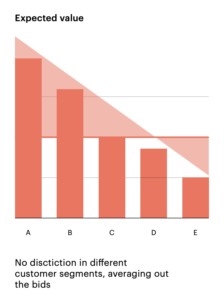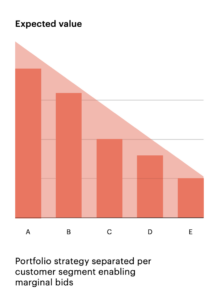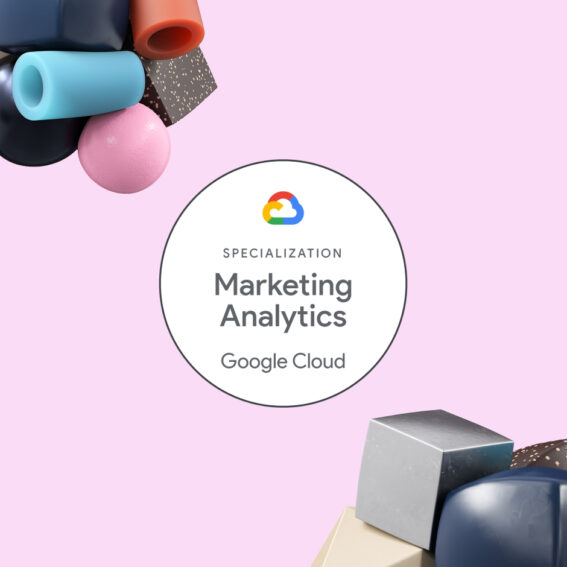3 strategies for the performance marketer during an economic downturn

Andreas Nguyen Arentoft
Marketing Science Director
The tough truth is that we are headed towards hard economic times. As a marketer, the pursuit of growth at any cost is not a viable strategy anymore (it never really was) and naturally, this will change the ways in which marketing teams operate.
It’s no secret that marketing is often the first target when it comes to reducing operating costs for a business. However, the impact that this can have on long-term sales and brand awareness means that many teams may regret this tactic further down the line.
That being said, budget cuts and a tighter focus on the bottom line are a reality for many marketers reading this article. So, what are some of the most effective strategies that you can adopt to grow sustainably and steer your teams through tough times?
Focus on profit, not revenue
Thinking cash, not sales, will be key for your business to grow sustainably. Whereas revenue growth helps secure market position, profit growth helps pay the bills. According to Salesforce, average purchase intent was down 12% in Q1 alone. However, if e-commerce marketers, in particular, are still basing success on reaching sales or target order volumes, then cost per conversion will go up, industry competition will increase, and the only real winners will be the ad platforms themselves who can charge more per click.
If you have a variable margin between your products, you should change your optimisation goal to POAS (Profit Over Ad Spend) within ad platforms. This way you will only spend on advertising relevant to the profit margins of specific products.
There are two approaches when it comes to profit-based marketing you can consider:
1. You can do this by enhancing the signal your performance marketing campaigns are optimising towards by sending profit data back to the marketing platforms. This informs the algorithm what traffic really matters to you based on your internal data. The more information you have on high-value customers, operating margins, delivery costs – even return rates – the smarter the targeting within the platforms will be.
2. A quicker and less implementation-heavy approach is to segment your low-margin products out of your product-focused campaigns (Google Ads & Meta Ads). Set a stricter target for those products and keep investments higher for the products that yield better cash returns. Zero-margin businesses can also do this by identifying markets or services that have a lower lifetime value and reducing marketing investment in those products. Ultimately, your goal is to focus on your winning, cash-driving products/markets.
Keep a tighter audience strategy
As a marketer, we strive to ‘move the needle’. But the truth is, a lot of people will not change behaviour simply because of an ad interaction. This may be because they are not the right audience, or may be we have already convinced them that we are selling a great product.

In both cases, pushing marketing spend to boost purchase likelihood is a waste of money. Marketers that realise this – and know how to leverage their first-party data – will get more out of their investments by reducing waste towards these segments.
For instance, is it worth advertising towards first-time customers with a discounted product ad for them never to be seen again (until the next Black Friday rolls around)? Or is it worth investing in your loyal, repeat customers who may be more willing to buy your product at full price, time and time again? Only your CRM data knows the answer.
By creating lookalike audiences from those high-value segments you can scale your audience strategy and make sure every marketing dollar yields an impact.

Think long-term, build your brand
As much as ad platforms want you to believe it, you cannot force sales. Customers buy your product if they need and/or want it. Not because you spent €1000 showing them the same ad copy a million times (it’s actually just as likely to have the opposite effect). Perhaps your category is just not as in demand today – but what about in a year’s time?
Before you ask your team to push for a lower performance target via your lower funnel channels, consider looking more long-term and move your diminished marketing budget towards brand building. This can strengthen mental awareness for consumers and help create a sustainable upper funnel pipeline. You can do this by investing in a strengthened creative team, a tighter focus on messaging or launching top-of-funnel campaigns that display your core values to your target group.
Oftentimes during a recession, brands lean into “persuasion-driven” ads centred around promoting bundles, discounts, or other deals. However, don’t neglect brand-building campaigns that remind the consumer of the core values and USPs that will create loyal customers in the long run.
Once the dust settles and your category is in demand again, you will be in a much stronger position than those who burned through their cash to hit the revenue targets. This, combined with the audience strategy mentioned above, will ensure that your investment is efficiently deployed in the long run.
Conclusion
These strategies outlined above are sensible for any economic environment – not just the tough ones – but in an era where marketing budgets will come under greater scrutiny, these tactics can help your brand maintain growth and profitability. Indeed, chances are, if you employ these strategies, by the time the next downturn rolls around your budgets might not always be the first to go as you can point directly to the impact on the overall business goals.
For more information, check out our case study with Kids Brand Store for a more detailed overview of these strategies in action or get in touch if you would like to apply a profit-driven marketing approach with Precis.


